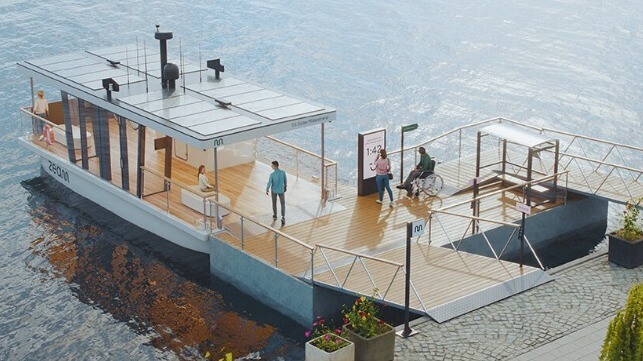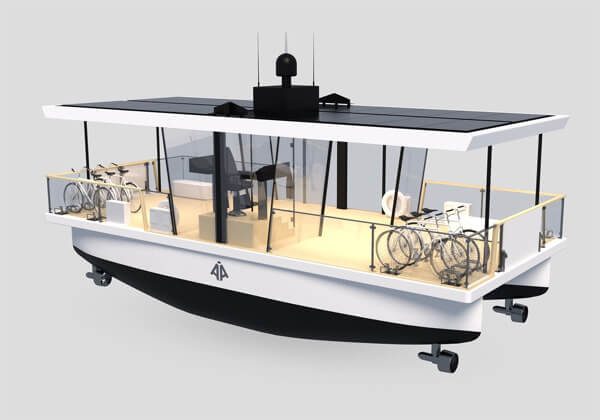First Commercial Self-Navigating Electric Ferry Launching in Stockholm

A ferry that is being billed as the world’s first self-navigating electric ferry is due to start service next month in Stockholm. The pilot project is reported to be advancements both in autonomous navigating vessels as well as battery power that the companies behind the project hope to expand into global applications.
Known as the Zeam ferry, the vessel measures 39 feet and can carry up to 24 passengers as well as providing space for bicycles. There will be a covered passenger deck with boarding and disembarking at both ends. It will make a crossing of Stockholm harbor between the Kungsholmen region and Sodermalm, an island in the habor, approximately every 15 minutes and operate for up to 15 hours per day.
The ferry is powered by an electric motor and a 188 kWh Zem battery system developed by Zeabuz, a Norwegian start-up. According to reports, the battery system will be recharged overnight and the vessel will not require charging during peak travel times. It will also have solar panels to provide additional energy.
The navigation system will consist of radar and a LiDAR system as well as an infrared camera, ultrasonic sensors to aid with docking, and GPS for positioning. During the initial runs due to start in Stockholm in June 2023, there will be a captain aboard to monitor operations in addition to the onshore operations center. After the initial period, the plan is to control all the operations from the onshore operations center.

Zeam ferry will test the autonomous system in commercial operation and provide a prototype for larger ferries (Zeabuz)
Construction of the vessel is underway at Brødrene, a Norwegian shipbuilder. The yard has emerged as a leader in the construction of fast ferries made of carbon fiber composites.
The technology for the ferry is being developed by Zeabuz, a Norwegian company that is a spin-off of earlier university research and since 2021 partially owned by Torghatten, a Norwegian shipping company that will operate the Zeam ferry. The research originated at the Norwegian University of Science and Technology (NTNU) in Trondheim, Norway. Zeabuz was launched in 2019. Zeabuz has already developed an autonomous test ferry that runs in Trondheim, Norway.
“We have learned a lot from our project in Trondheim, and now we are ready to take the next step in creating the world's first commercial autonomous city ferry,” said Erik Dyrkoren, CEO of Zeabuz. “The technology will mostly be the same, but in Stockholm, we will test the autonomy system in daily operation with passengers in a way that no one has done before.”
The Ports of Stockholm is also working on the project as part of their research into the safety aspects of autonomous transport. The Ports of Stockholm, together with several partners including DNV as the classification society, have been granted funds by the Swedish Transport Administration for research into autonomous maritime transport in urban environments. The two-year project is scheduled to run through February 2025.
Like many large cities around the world, Stockholm is challenged by congestion and the need to reduce emissions. The project organizers point to the potential of waterborne transport and believe the technology will provide the opportunity to broadly expand the use of small passenger ferries in cities.
Zeabuz in February 2023 reported it had raised a further NOK 20 million (approximately $1.9 million) in seed financing from a group of leading technology companies. Among the latest investors are Yinson Green Technologies and Statkraft.
“We recognize the enormous potential of autonomous vessels and see Zeabuz as well positioned to become a leader in this segment,” said Eirik Barclay, CEO of Yinson commenting on their investment in the company. He said that Yinson plans to incorporate Zeabuz's technology into its electric vessels and use the technologies to increase vessel safety and operational efficiency.
